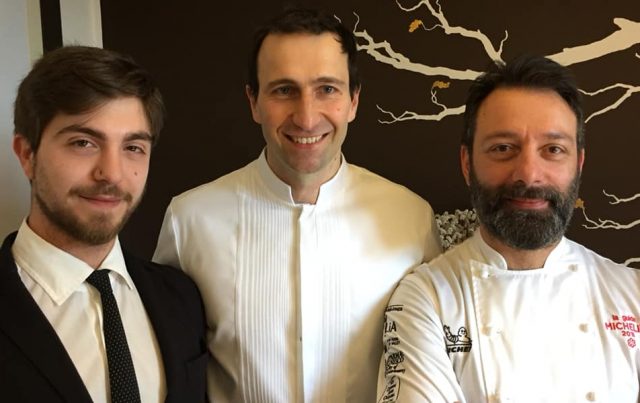Ciolli: A surprising Cesanese di Olevano
The time has come an end to the bias against Cesanese which has resulted in it being dismissed as only a rustic variety that produces clunky wines. Once defined as the Beaujolais Nouveau “de noartri” (a slang Roman term meaning we others), by our Doctor Wine Daniele Cernilli, it was a slightly sparkling red wine, often sweet, which many years ago flowed like a river in Roman taverns. After years of research, work in the vineyard and experiments using different winemaking methods, many producers of this indigenous Lazio variety have been able to ‘clean’ this wine’s image and give it a new shine.
Several days ago, Riccardo Viscardi and I took part in the first historic vertical tasting of ten vintages of Cesanese di Olevano Romano. It has hosted in the estate of Damiano Ciolli who is, without a doubt, one of the producers who has succeeded in bringing out the best Cesanese can offer.
Olevano is a medieval town on the side of Monte Celeste southeast of Rome that sits at an altitude of 600m above sea level and is surrounded by one if the loveliest landscapes in the Lazio region. Damiano Ciolli joined his father Costantino in 2001 and decided to bottle his own wine using grapes from an old vineyard his grandfather planted in 1953. The wine was named Cirsium and became the estate’s cru and the older brother of Silene, the second Cesanese d’Affile produced by this small wine estate of six hectares, 4.5 of which have a volcanic soil. After his father died, Damiano kept on track with the aim of producing a Cesanese that was different from the others, convinced as he was that this grape had much more to offer and that if treated well could produce even elegant wines.
Together with is life partner and enologist Letizia Rocchi, he embarked on years of experimentation and tweaking to correct his aim. He tried using new wood barrels, used barrels, then large barrels, fermenting in stainless steel, then cement, shortening maceration time and so on. In other words, he carried out an in-depth, precise and exhaustive study of his Cesanese in order to create the wine it is today, an elegant wine that has great freshness, crispy fruit and a rip-roaring personality.
It was an authentic revelation to sample such well-made Cesanese wines that favored elegance and drinkability over structure. The ten Cirsium Cesanese di Olevano Romano DOC vintages in the tasting were from 2001 to 2012 and did not include 2002, which was not produced, nor 2008, of which only a few bottles are left due to a theft at the winery.

 Italiano
Italiano











